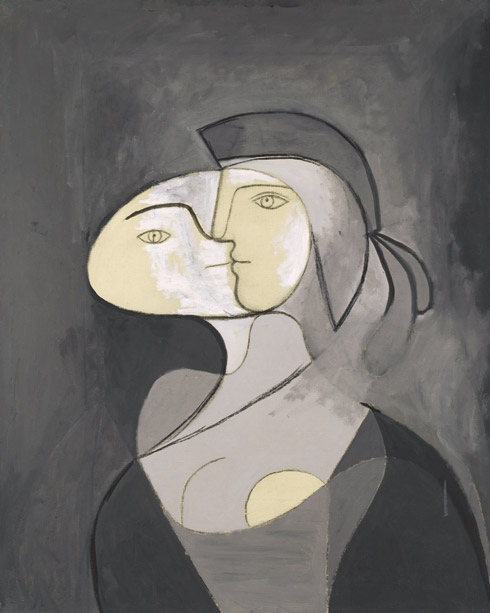
Picasso Black and White is the first exhibition to explore the remarkable use of black and white throughout the Spanish artist’s prolific career. Claiming that color weakens, Pablo Picasso purged it from his work in order to highlight the formal structure and autonomy of form inherent in his art. His repeated minimal palette correlates to his obsessive interest in line and form, drawing, and monochromatic and tonal values, while developing a complex language of pictorial and sculptural signs. The recurrent motif of black, white, and gray is evident in his Blue and Rose periods, pioneering investigations into Cubism, neoclassical figurative paintings, and retorts to Surrealism. Even in his later works that depict the atrocities of war, allegorical still lifes, vivid interpretations of art-historical masterpieces, and his sensual canvases created during his twilight years, he continued to apply a reduction of color.
Picasso was born in Málaga, Spain, on October 25, 1881, to María Picasso López and José Ruiz Blasco. His father, a painter, art teacher, and curator, encouraged his son to become an artist after quickly realizing Picasso’s astonishing artistic gift. Following his studies in Spain, he settled in Paris and embarked on an extraordinary career to become the most influential figure in twentieth-century art.
Managing a complicated composition without having to organize contrasts of color, Picasso created such masterpieces as The Milliner’s Workshop (1926), The Charnel House (1944–45), and The Maids of Honor (Las Meninas, after Velázquez) (1957). The graphic quality of Picasso’s black-and-white works harks back to Paleolithic cave paintings created from charcoal and simple mineral pigments (Female Nude with Guitar, 1909), to the tradition of grisaille (Study for Sculpture of a Head [Marie-Thérèse], 1932), and to European drawing (Man with Pipe, 1923). Picasso used this distinctive motif to explore a centuries-long tradition of Spanish masters, such as El Greco, José de Ribera, Francisco de Zurbarán, Diego Velázquez, and Francisco de Goya, whose use of black and gray was predominant.
Picasso’s palette reveals the development of a unique working process, which he pursued until his death on April 8, 1973, in Mougins, France. His innovative works in black and white continue to influence artists today. This chronological survey, spanning 1904 to 1971, includes paintings, sculptures, and works on paper, all of which highlight the artist’s choice of black, white, and gray in lieu of color.
—Carmen Giménez, Stephen and Nan Swid Curator of Twentieth-Century Art, with the assistance of Karole Vail, Associate Curator
